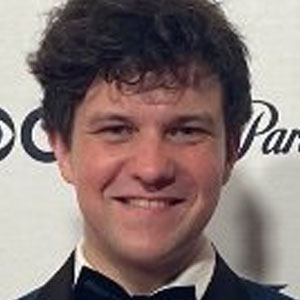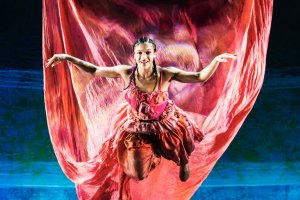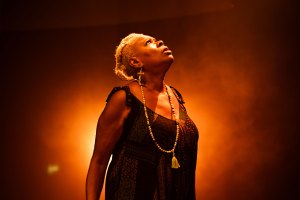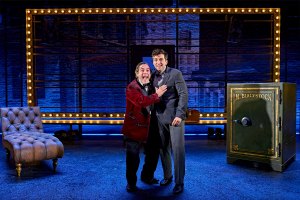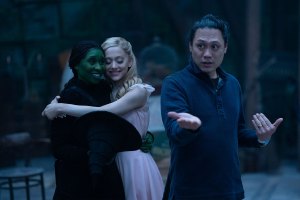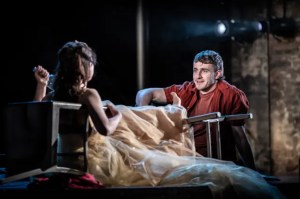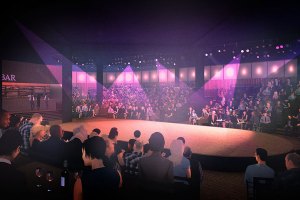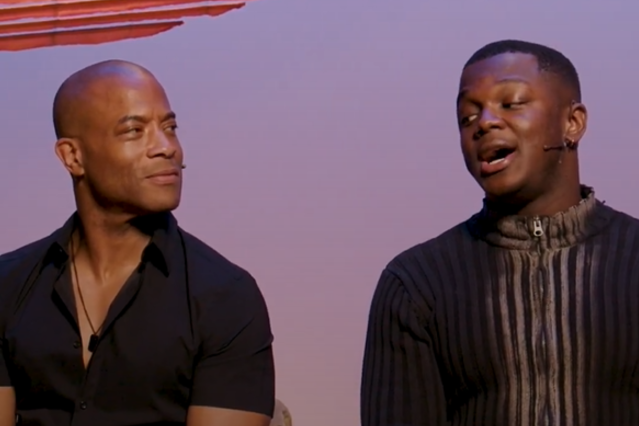Jordan Peele, Sylvia Plath and Wong Kar-wai – how New Adventures' three dance films came together
The three films have been released over the last few weeks
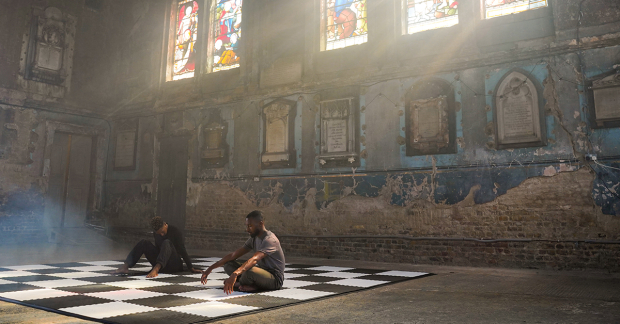
© Kaasam Aziz
But they're now heading online with three dance films created by former company members from New Adventures shows – Tasha Chu, Monique Jonas and Anjali Mehra. The trio talk about their projects here.
Chu, who graduated from the Central School of Ballet in 2018, made her professional stage debut in Bourne's incredible Romeo and Juliet. She discusses her piece Nostos, about a couple trying to come to terms with their present reality. You can watch it below.
1. Can you talk through your inspiration for Nostos?
I was drawn to the idea of voyage and return – one of the seven basic plots from the book of the same name that Matt gifted us. One of the greatest stories of a return home (specifically as a war veteran) is that of Homer's Odyssey and something that resonated were the parallels between Odysseus returning home to a place he did not recognise, and modern-day veterans having similar struggles when reintegrating into society. I wanted to focus on a duel narrative – a story not only of the soldier, but those they leave behind.
2. What do you think was the biggest learning curve for you while choreographing for the film?
The project was such an amazing platform for me to explore something totally new. I think the biggest learning curve was being in a position to decide how all aspects of the film; the venue, narrative, music, costume and lighting, would work cohesively with the choreography. Creating the movement with filming in mind was another new experience for me – I learnt a lot through working with TEA films about the details you can achieve on film that aren't so relevant on stage.
3. Why did the story prove so powerful while you were creating the piece?
I think the story proved powerful because it deals with themes of adversity that can be seen in multifaceted scenarios. I felt it was important for the gender of the soldier to remain ambiguous and challenge the conventional beliefs of a male-dominated role.
4. What struck me was the film's repeat use of chiaroscuro – can you talk about how light and choreography work in tandem?
The lighting was something I felt was really important to think about when selecting a venue and it played a huge part in enhancing the narrative of the film. Utilising the different aspects of natural light that the space provided, allowed for distinctive changes in mood as the story progressed – I think transitioning between the subdued interior and warmer exterior shots particularly helped to facilitate what I was trying to say choreographically.
Jonas, who completed training at Rambert before a Masters at London Contemporary Dance School, also appeared in Romeo and Juliet, while setting up her own dancing company Jona Dance. Her show is titled Checkmate, and follows a man whose sense of normality is splintered.
1) There's something ominously haunting about the way you've stylised the choreography in Checkmate – what were your main sources of inspiration?
Initially, I just had the idea of a black and white room and the title Checkmate. These were the only two elements of the idea that I had at the beginning. As I was developing the idea, I knew that I would like the journey of the central character to perhaps be one of self-reflection. So I did a bit of research into doppelgangers and I took particular interest in the film Us by Jordan Peele. His use of imagery is particularly interesting to me, alongside the subtle clues that he hides in plain sight throughout his work. I was thinking a lot about imagery and the visual journey of the film too, as opposed to just thinking of it as dance. I also haven't seen many dance/horror-themed work, so it was a nice challenge to venture into that fusion.
2) The locations for the film are incredibly rich – how did you work within the space to develop the choreography?
I spent hours searching for the right locations prior to stepping into the studio. It was really important for me to know where we were filming before creating choreographically so to know what I could work with. I went on the recce for both of my locations and took detailed videos and images of the spaces. I used these images to start thinking of the visuals for Checkmate. I was then able to create movement and find my relevant props and costume in accordance with my locations. Because of this, it was quite easy to adapt certain elements of the choreography and also the set design when we were eventually in the space on the day of filming. From the beginning, each section was choreographed according to how much space we would have in each venue, and also according to what I was hoping the camera would capture for that scene.
3) What do you think are some of the key challenges facing contemporary choreographers?
I think it is quite hard to do something completely new and refreshing as there is already so much out there. I think contemporary is such a broad genre, that differs depending on which city/country you are in, and so catering to such a wide audience is both great yet challenging at the same time.
As a black female artist, I think a huge challenge when it comes to creating contemporary work, is accepting the lens through which my work is viewed. It is often expected for BIPOC artists to talk about their struggle, and if this is not the artist's choice, their work is often labelled as ‘urban' or likened with street dance, hip hop or the overarching label of ‘Black Dance'. It prompts the question of what is ‘Black Dance" and why is it not accepted as contemporary?
4) What element of the shoot did you find most rewarding?
I was grateful to be on set and creating during what has been, for many, a very challenging year. The reward comes in knowing that it is possible for an artist like myself to create in more ways than one.
Mehra trained at Central School of Ballet and, after graduating, took on multiple roles in Bourne's Swan Lake. Over the last two decades she's performed as principal dancer for the company on a number of occasions, and was set to choreograph Jeremy O'Harris' Daddy, before the lockdown had other plans. Her piece, Little Grasses Crack Through Stone, is inspired by a little-known Sylvia Plath radio play.
1) The film takes its inspiration from a Sylvia Plath radio play – why do Plath and dance sit so well together?
I knew that I wanted to create a story with three women and as I was researching, I came across this radio play commissioned by the BBC in the 1960's by Sylvia Plath (Three Women: A Poem for Three Voices). It couldn't have been more perfect mainly because of the incredible imagery created in the poetry. The words themselves conjured up so much movement, colours, emotion and environment that I began imagining the scenes immediately. Although it was quite tragic there was a sense of hope for all three of the characters which helped me to realise a journey and resolve for them. The play is divided into monologue written in the voice of each character… each soliloquy describing a scenario that they are going through. Essentially it is three women's stories intertwined through the experience they all share.
During this time of Covid, where dancing together would have been more complicated, this proved itself to me as a perfect template to create my dance film. In essence, I would set up the scene that these three women are connected and then proceed into three solo stories that were told simultaneously but all with their own timeline. I spent a lot of time editing the play down to its bare essence, removing paragraphs as I went so that I could create a scene by scene for each dancer. Plath's words are so descriptive; she uses nature as metaphors and anything that connected with me immediately was what I was inspired by to create movement, mood and story of each scene. I often use words as a starting point for choreography, so this process was very familiar to me. The three characters: The Mother, The Working Woman and The Student also inspired costumes, age, era and the dancers I chose to cast in the film.
2) What was your highlight of choreographing for the screen?
There were so many highlights, but I enjoyed the element of choosing where the audience had to look to enhance movement, choreography or storytelling. I felt there was much more lenience towards the unexplained in film over stage work because you could just give a snapshot of a scene, or allow the story to land in the apex of a moment rather than needing to build around it with entrances of characters on stage etc. I wanted the film to have quite an epic vibe, with a painting per frame sort of feel, but at the same time be a real, raw and true performance. So being able to use the camera, editing and lighting in a way that enhanced the drama without taking away from the honesty of the moment was very exciting. And most importantly, it felt that movement and choreography had to be essential and felt by each woman and not superfluous or decorative. I directed the women by telling them to play overcoming an emotion, overcoming a challenge as opposed to the emotion itself.
When you are acting onscreen, the camera sees everything so this was also a highlight for me – working with this difference from theatre. I work a lot on such big-scale productions that the increased physicality of a performer is often the best way to speak to an audience but here, it could just be a shift in eyeline, an exhale of breath, a slight smile- all very potent.
3) The piece tells a vibrant, multi-generational story – how did you distinguish between the different themes and periods in the movement?
I was inspired by a few movies including In The Mood for Love directed by Wong Kar-wai which uses atmospheric vignette style lighting but with very distinctive colour- and also Hero directed by Zhang Yimou which uses colour as a dominant factor on a whole different level, flooding each scene with one tone in the most epic and stunning way. It inspired me to give the women a signature hue. So the Mother was blue, the Working Woman was red and the Student was yellow.
I wanted a little twist at the end so I had the idea that this could have been one woman at different stages in her life; all three stories could have happened to one singular woman in her lifetime. The final image came to me – I wanted to end with an older woman in her 70's or 80's looking out to sea and remembering her life- the ocean conjures up so much memory and feeling and it would open up the film to calm nature, a stark contrast to the claustrophobic settings in previous scenes. The older lady (Aseah Pontyz) would also be in present day. Therefore, the Student who was in her early 20's could be from the 1960's, the Working Woman in her early 30's could be from the 1970's and the Mother in her early 40's could be from 1980's. If this was one woman's life then this timeline would work.
It all had to tie up for me as a possibility but it did not have to be the interpretation that everyone would catch on to. However, it gave an extra layer for the performers, especially Charley Broom playing the Mother who could have essentially been through all of the story lines. It also allowed me to use repeats and theme with movement and items of clothing. For instance, in Cordelia Braithwaite's (the Student) scene where she gives her baby away- the baby is swaddled in a scarf that is then worn by the older woman on the beach at the end. It is also why they all occupy the same room at the beginning. And the final resolve for The Working Woman played by Estela Merlos is not the same as Plath's play- in that she is comforted by her husband. I wanted her to be comforted by the other women, the women that could possibly be her past and her future, knowing she has gone through worse and that there are better times to come. This felt like a more modern and appropriate resolve for me.
It also gave me distinctive ideas behind their costumes. Lez Brotherston actually sent me lots of sources of inspiration and images from different eras. Knowing I had a style, an era and a colour palette for each dancer and their story really helped to create their identity.
The movement itself was not based on era, it was purely based on the story telling and from the text- I used certain words and paragraphs associated with each scene to create the choreography, trying to essentially make poetry through dance.

